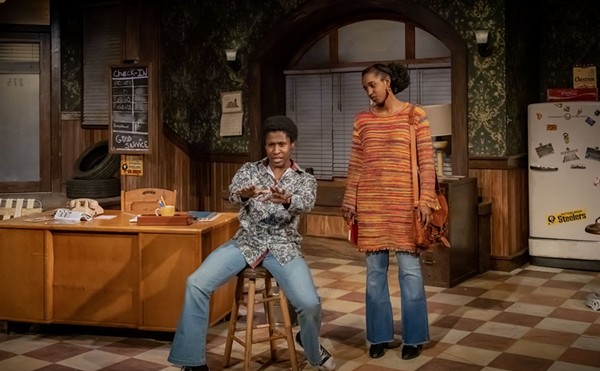Every once in a while we are lucky enough to bear witness to the evolution of an artist's work — not by studio visits or any sort of peer relationship, but by simply having seen their previous work, accidentally stumbling across exhibitions and getting to understand their process. The evolution of an artist's work is paramount in understanding their visual lexicon. I'm not talking about Picasso or painters who have gone through "periods," using their mediums to shift mood; nor am I speaking of movements. No, this is a dialogue that an artist has with their work, their thoughts, their concepts, as going from one medium to another. It is about the evolution of their craft, and what is more exciting than experiencing the evolution of an artist's work through actual mediums? I suppose this is what makes it thrilling to be an art collector and/or a curator.
Omnipresent collectors, and owners of Maria Neil Art Project in Collinwood's dynamic Waterloo Arts District, John Farina and Adam Tully had been wanting to produce a solo show with Deborah Pinter since her participation in the Flower Power exhibition at their space in May 2014. In that three-person showcase, Pinter's work was created by digitally scanning flowers, then manipulating the images before printing on sheets of polymer. This process is referred to as scanography. For those who do not know, scanography (also known as scanner photography) is a method pioneered by the American artist Sonia Landy Sheridan in 1968 and is a fascinating and widely regarded medium.
The survey of Pinter's work has been in your and my periphery since the late 1990s, from her computer generated, black-and-white photography, with hints and kisses of the human figure dominated by natural surroundings, to her Luminous Florals show at the John F. Seiberling Gallery in Cuyahoga Valley National Park that displayed her intimate, tightly colored palette portraits of flora, to this post-residency solo exhibition of prints filled with black, white, yarrows and browns.
These latter and seriously visceral works are the result of Pinter's residency in Dresden, Germany, through the Zygote Artist Residency Exchange Program and the Ohio Arts Council. Her original algraphy and monotype prints are direct reactions to being in Dresden and working at the Grafikwerstatt Studio. Upon her return, she continued to build upon the emotional and tactical experience gained.
Walking into the Maria Neil Art Project gallery, we are confronted by lyrical plant distortions that intertwine and evoke the spines of modern dancers frantically expressing their raw being. To the left, we find another triptych where the branches are in static repose. The contrast between the two is truly powerful.
There is a grouping of work — although the work is not, in fact, a grouping — titled "Dresden Squares 1 - 4" (pictured above). They are small pieces, 12-by-12-inches each, yet they deliver an incredible impact. This dance of Protium copal tree pods, a flora originating in the Yucatan where the resin is used to make sacred incense the Maya use in rituals and ceremonies, is fucking mesmerizing. Why or how this tree came into being in Dresden and was there for Pinter is kismet, and she made the absolute most of it. What is extra cool is that they are embossed, the resin having set and fissured on the paper. Movement and texture are paramount in these pieces. Actually movement and texture are present in all the works, especially the wall of prints that are not framed. It will take everything in your power not to touch them. Seriously. Everything in your power.
In the artist's statement, Pinter writes, "... I believe that patterns communicate on a subconscious level an understanding of who we are, what we are. What I find most rewarding about working with this process is seeing the bold patterns emerge as stems and stamen crisscross like spokes in a wheel. The curving, splitting, folding, and twisting induce a feeling of pleasurable disorientation. There is a push/pull created between opposing elements that define both the floral and human: energy and dissipation; clarity and mystery; and presence and absence. These many contradictions allow me to continue to examine both nature and my relationship to the natural world."
My favorite piece in Natural Selections integrates the Devil's Backbone, a plant whose branch zigzags at 1-inch intervals, sprouting alternating leaves from its nodes. In looking at the work one would assume that Pinter uses oil stick, but that is not the case. This particular piece has what the French refer to as la poesie: beauty, body distortions, plants, plant distortions, beauty. The beauty of this print lies in its rawness and its many planes. The bold white against a heather gray background with black branches reaching up to infinity evokes a state of calmness. If you've ever driven through the desert at night, you know what I'm talking about. If you haven't, imagine you are driving through complete darkness. The headlamps from your car are the only source of light along your drive as the cacti and Joshua Trees reflect the luminescence and cast shadows onto the star-riddled sky. That's what this piece suggests. As a matter of fact, that's really what many of the works in Natural Selections call to mind.
Get off your ass and go.











